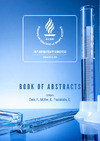Identificador persistente para citar o vincular este elemento:
https://accedacris.ulpgc.es/jspui/handle/10553/119426
| Título: | Modulation of skeletal muscle NRF2 and NFKB signaling by exercise during extreme energy deficiency in humans: role in muscle catabolism | Autores/as: | Martín Rincón, Marcos Gallego Sellés, Angel Martinez Canton, Miriam Martín Rodríguez, Saúl Morales Álamo, David Holmberg ---,Hans-Christer López Calbet, José Antonio |
Clasificación UNESCO: | 2415 Biología molecular | Fecha de publicación: | 2020 | Proyectos: | Viabilidad y sostenibilidad del adelgazamiento mediante tratamiento intensificado en pacientes con sobrepeso u obesidad: mecanismos neuroendocrinos y moleculares Estudio longitudinal de los efectos de una modificación intensiva del estilo de vida en la composición corporal e indicadores bioquímicos y moleculares de salud en pacientes con sobrepeso y obesidad: aplicación para la evaluación fisiológica de rutas y sistemas de monitorización del esfuerzo ... |
Conferencia: | 25th Annual Congress of the European College of Sport Science (ECSS 2020) | Resumen: | Pro-inflammatory processes and oxidative stress interplay in obesity, which elevate the risk of disease and are associated with rapid losses of skeletal muscle (SM) mass. Upon elevated levels of oxidative stress, Nrf2 is activated to reduce ROS, while excessive ROS triggers NFkB signaling, a pro-catabolic transcription factor in animal models. Caloric restriction and exercise are effective strategies to mitigate obesity and both elicit upregulation of Nrf2 and NFkB signaling. However, no study has investigated the simultaneous interaction of both stimuli on human SM. Thus, we aimed to study the effect of different amounts of exercise during caloric restriction on the regulation of SM Nrf2 and the NFkB pathways and its potential role in the regulation of muscle mass. METHODS: Fifteen overweight and obese men were subjected to 4 days of caloric restriction (0.8g/kg BW/day of whey n=8 or sucrose n=7) and prolonged exercise (CRE) (45min of one-arm cranking and 8h walking/day). SM biopsies from both deltoid and one vastus lateralis were taken before (PRE), after CRE and following 3 days of control diet (isoenergetic) and reduced exercise (CD); and SM pSer40Nrf2, Keap1, SOD2, Catalase, NFkB p50 and NFkB p105 protein expression were analyzed (WB). Body composition was assessed by DEXA. Statistical analysis was performed with repeated measures ANOVA. RESULTS: After CRE the energy deficit was 5500 kcal/d, reducing fat-free mass (P<0.001). Legs and trained arm lost proportionally less FFM than the untrained arm [57% (P< 0.05) and 29% (P=0.05), respectively]. The activating phosphorylation at Ser40 of Nrf2 increased in all muscles after CRE and even further after CD (p<0.05), with a larger increase in arms than legs (extremity x time, p=0.05). Keap1 (Nrf2 repressor) was reduced only in the legs after CRE (extremity x time, p=0.046) and returned to basal at CD. Catalase increased in the arms (mean of both) after CRE (p=0.039), while remaining unchanged in the legs. No significant changes were found in SOD2. The levels of NFkB p50 and p105 responded similarly, being increased after CRE and CD, but to a larger extent in arms than legs (p<0.05). No significant changes were found due to the solution ingested. CONCLUSION: During an extreme energy deficit, there is an upregulation of the antioxidant system via Nrf2 in human skeletal muscle, which is enhanced by large amounts of contractile activity. The fact that Nrf2 activation was stimulated further in the legs likely permitted a lower expression of the antioxidant enzyme catalase. Furthermore, the increase in NFkB, a ROS-dependent transcription factor, was less marked in the legs, which supports the antioxidant effect exerted by exercise in the legs. The lower NFkB signaling in the legs (a potent catabolic transcription factor) combined with a lower loss of muscle mass could indicate that high-volume low-intensity exercise preserves muscle mass in the legs by attenuating NFkB-mediated protein-breakdown. | URI: | https://accedacris.ulpgc.es/handle/10553/119426 | ISBN: | 9783981841435 | Fuente: | 25th Annual Congress of the European College of Sport Science (ECSS 2020) |
| Colección: | Actas de congresos |
Visitas
25
actualizado el 11-ene-2026
Descargas
13
actualizado el 11-ene-2026
Google ScholarTM
Verifica
Altmetric
Comparte
Exporta metadatos
Los elementos en ULPGC accedaCRIS están protegidos por derechos de autor con todos los derechos reservados, a menos que se indique lo contrario.
